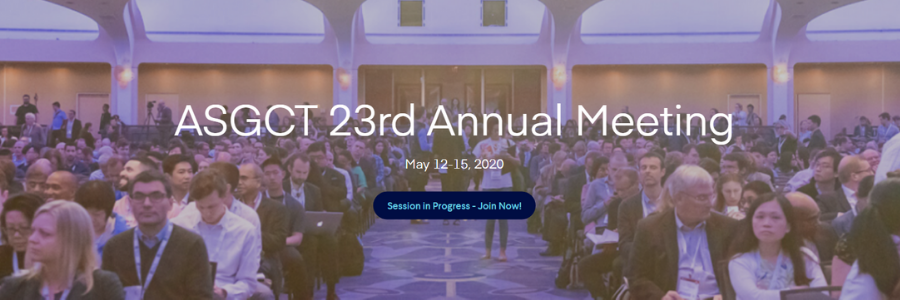What Was it Like to Attend ASGCT’s First Virtual Meeting?
Cenk Sumen, Ph.D. - May 27, 2020
Virtual conferences give us confidence that we can still unite our gene and cell therapy community remotely, and perhaps even in a more inclusive and efficient manner.

The very first virtual ASGCT Annual Meeting was a tremendous accomplishment in a time of crisis. We safely brought together 6,200 attendees from all corners of the world to share gene and cell therapy experiences with the rest of our community. During a time when the world is galvanized against a biological foe, this affordable, convenient community-building exercise meant a lot for all of us stuck in self-imposed isolation. Sure, we had our hiccups, but there were also many moments of insight, wonder, and enlightenment.
Benefits of the Virtual Environment
First of all, the low carbon footprint of the meeting without all the usual air travel was surely a plus for Mother Nature. The time zone can be set to an arbitrary one for a virtual meeting, but was kept at Boston time (ET) to ease the transition. And it was much easier to take screenshots by pushing a few buttons on our device rather than peek through the usual forest of smartphones held up to take snapshots during a particularly informative slide. The Bigmarker experience was an experiment pulled together on short notice by our dedicated staff and members, and worked well overall. I was glad to have the ability to follow the presentations not just on a desktop but also on my mobile device, without necessitating being anchored to a desk for hours. In that context, some features that we have gotten used to from Zoom could be added for future meetings, such as the ability to switch to other apps without disrupting audio transmission of talks. Closed caption, live translation and subtitles could also enrich the experience. Internet connection bandwidth will be the leading currency in a virtual setting, and those of us that had network issues from home could ponder on the “matrix black cat” moments when the presentation freezes, then backs up a few seconds to repeat the same segment.
The usual format of multiple concurrent sessions encouraged some “talk surfing,” which wasn’t necessarily a bad thing. This has occurred at previous annual meetings anyhow, and this time there were neither the slamming of doors at the back of the lecture rooms nor the usual jockeying for the aisle seats. The Q&A sessions were one of the clear improvements of a virtual meeting. For the well-moderated sessions, this turned into a much more informative experience than usual. Many more people asked questions of considerable quality despite the abridged format, and these were answered efficiently by the speakers. The voting system to move higher ranked questions up the list was a real improvement that could be incorporated into a hybrid physical/virtual conference for future editions.
Suggestions for the Future
I collected a few more suggestions for best practices to be considered for future virtual meetings. Moderators should ideally remain until the conclusion of the final presentation in their session and could consider delivering a one to two-minute recap or summary of all the presentations. The current speaker should be indicated in red in the chat window, which some sessions had and others did not. Session icons should shift from having a green dot to a red dot when the session concludes. Finally, when a session concludes, background “musak” and ASGCT branded slides should play—again, some sessions did this but others ended with the last slide of the final presenter as if everyone just virtually bolted away at the end of the final talk.
Virtual conferences give us confidence that we can still unite our gene and cell therapy community remotely, and perhaps even in a more inclusive and efficient manner. We are learning and will incorporate best practices into future meetings. I was glad to be with colleagues for the better part of a week in a structured and courteous online setting where we could carry out productive sessions and arrive at tangible insights together. The virtues of a virtual conference need not be reserved just for pandemics.
Dr. Sumen is the chief technology officer at Stemson Therapeutics and a member of the ASGCT Communications Committee.
Related Articles